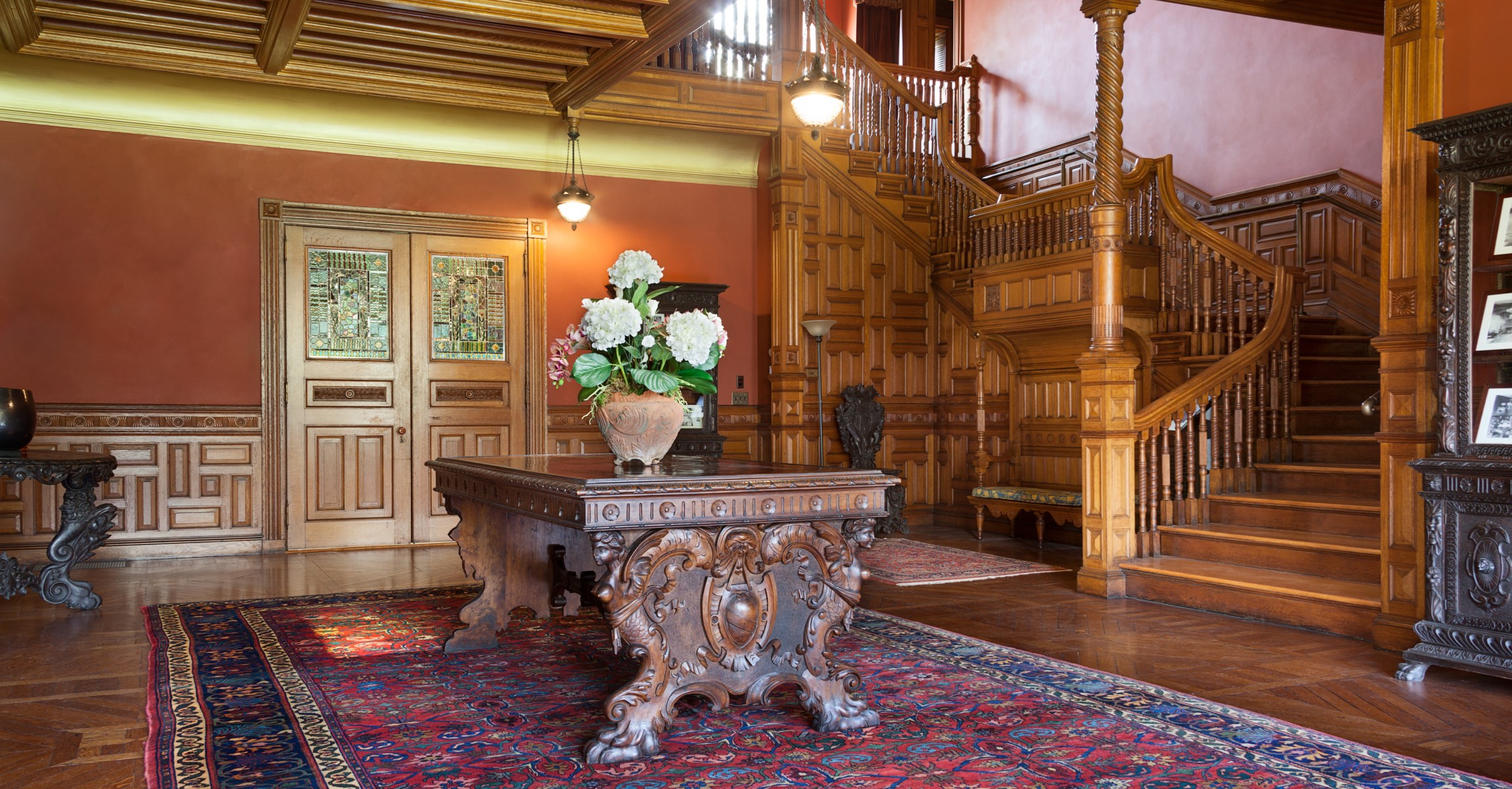 Eustis Estate
Eustis Estate
Hall Introduction

A grand space at the center of the home
When the Eustis Estate was built in the late 1870s, the “living hall” was a relatively new concept. Architect William Ralph Emerson was a key proponent of this large and inviting space. He included the design feature in nearly all of his house plans. The living hall was more than just a space that connected rooms; it was a vital part of the house and a central part of daily life.
The living hall was also among the first impressions visitors had of the young couple’s home. Guests entered through the vestibule, where they encountered a pair of dramatic stained glass windows, colorful yet obscuring the view into the hall beyond. Once inside the hall, visitors were impressed by the imposing fireplace of molded terra cotta set behind an arch covered in gold leaf. The richly carved staircase soaring three stories anchored the other side of the room. Opposite the front doors, plants from the estate’s greenhouse thrived in the sunlight.